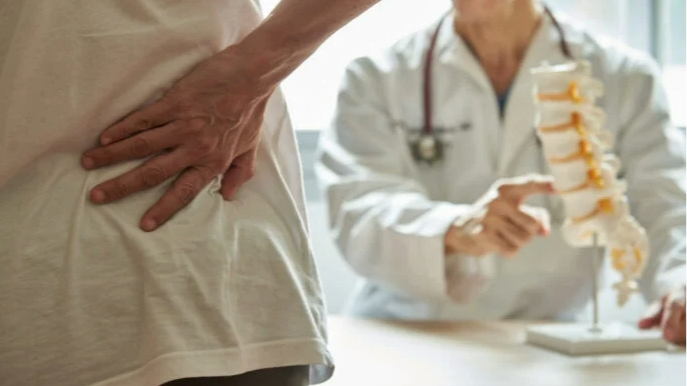Finding the right treatment for a cervical spine injury can be a pain in the neck. Conservative approaches are often the first option recommended by doctors. However, when they don’t produce the needed results, or if there are signs of serious, ongoing injury, then it would be time to consider interventions such as surgery.
Common Cervical Spine Injuries from Car Accidents
An estimated 12,000 new cervical spine injuries occur each year, with 42% of those being attributed to car accidents. That means that a large number of these injuries that are reported each year are the result of an automobile accident.
Accidents can lead to injuries in almost any part of the body but the neck (or cervical) region of your spine is one of the most high-risk parts to be damaged. This is mainly because the force of most car accidents can cause your head to move violently, causing excessive strain and tension to be placed on the delicate neck bones and tissues.
The most common cervical spine injury from a car accident is known as “whiplash.” This injury occurs when your head is forcefully snapped forward and then back on your neck. It’s been compared to the snapping of a bullwhip, hence the name. This rapid, forceful movement can cause soft tissue damage to the muscles, nerves, ligaments and discs of your neck, not to mention injuring the bones of the spine, the vertebrae. This can result in neck pain as well as pain in the shoulders and arms. In many of these cases, the symptoms can improve on their own without surgery.
Injuries That May Require Surgical Intervention
If your injuries from an auto accident are more severe, you may end up requiring surgical treatment to remedy the pain and other symptoms. While it’s not incredibly common to require cervical spine surgery after an auto accident, it is still a possibility — particularly if conservative treatments such as medications and physical therapy have not helped to alleviate your symptoms.
Disc Degeneration
Disc degeneration is a normal part of the aging process. While the condition itself is not caused by an auto accident, it can predispose you to injuries in the event of a collision.
Your spine is made up of bones, called vertebrae, that are stacked together. Between the vertebrae are structures that are filled with a gel-like substance known as intervertebral discs. They act as a shock-absorber between the bones and aid in the bending and movement of your spine.
As your discs age, they begin to slowly weaken. In most instances of day-to-day life, this isn’t a problem. However, the impact caused by an accident can make these discs tear or rupture. A ruptured disc is often also known as a slipped disc, herniated disc or bulging disc. Essentially, the soft substance in the disc will be forced out of its fibrous casing, and can put pressure on your nerves or spinal cord, causing a wide range of symptoms, including pain, weakness, and numbness.
Luckily, as one of the most common causes of neck pain, many doctors are able to spot the signs and symptoms of a herniated disc quickly. In the case of a spinal cervical injury, car accident-related herniated discs can be easily found on physical exams and imaging studies, such as CT scans or MRIs.
When a ruptured disc is first diagnosed it is often the case that your doctor or surgeon will recommend a more conservative treatment plan. If, however, the symptoms don’t decrease or you’re experiencing severe symptoms, they may recommend surgery.
Spinal Cord Injury
The spinal cord is the structure that connects the brain to the rest of the body, both of which comprise the central nervous system, or CNS. The nerves that control the body branch out from the spinal cord.
Spinal cord injuries differ from nerve compression in that multiple body parts and functions may be affected. Those that occur in the cervical region of the spine can be particularly serious, as the nerves that control the entire body from the brain go through that area of the spine. Everything below the point of injury can be affected. With serious injuries to the spinal cord that occur in this region of the neck, it can result in everything from pain to partial or whole-body paralysis (quadriplegia).
Surgical Treatment for Spinal Injuries
Surgeries for a herniated disc include partial discectomy or full discectomy (with or without fusion) or intervertebral disc arthroplasty (disc replacement).
Surgery for a spinal cord injury may include spinal decompression surgery or a stabilizing procedure such as a spinal fusion.
Partial and Full Discectomy
When a disc is damaged your surgeon may recommend a discectomy. This procedure may involve removing only a portion of the disc to alleviate pressure on the nerves, or, in some instances, the entire disc.
Discectomy is an anesthetic procedure, meaning you will be asleep for the length of the procedure. With the use of specialized instruments and a microscope, your surgeon will carefully remove the damaged portion or entire disc. If the spine is weakened or the vertebral space needs more support and protection, a surgery known as a fusion may also be performed at that time.
A fusion involves placing an implant between the affected vertebrae, creating a more solid and supportive structure. This may also be done in conjunction with the placement of rods, screws or plates to help even further stabilize the damaged area.
Disc Arthroplasty
Should you require a complete discectomy, you may be a good candidate for a disc arthroplasty. Your doctor will be able to help you determine if this is an option for you.
Disc arthroplasty is another general anesthetic procedure that is performed in a hospital or surgical center. The procedure involves the full removal of a damaged disc. The area is then cleaned of any bone spurs or other anomalies and a manmade disc is put into its place, allowing for the maintenance of normal motion
Spinal Decompression Surgery
Spinal decompression surgery may involve a number of different procedures. One of the most common is the aforementioned discectomy. A large portion of spinal compression injuries involves a damaged or ruptured disc. These discectomies can be performed from an incision on the front of the neck, known as the anterior cervical approach.
In some instances, the cervical spine would have to be accessed from the back of the neck, known as the posterior cervical approach. In some instances, this is the best method to relieve pressure on the spinal cord from fluid, blood, fractured vertebra, or injured ligaments, as well as to perform fusion procedure to allow for spine stabilization.
Automobile accidents can be a frightening experience and are only compounded when you are faced with surgery. If you may be facing cervical spinal surgery due to an auto accident, be sure to talk with your doctor and surgeon about all of the available options and how each can benefit you in your long-term recovery goals.





